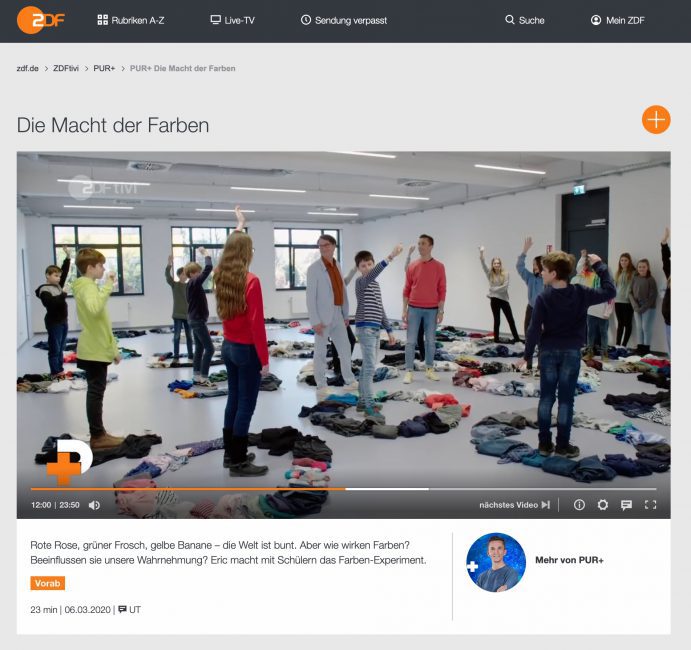
The psychology of colors is not just something for experts, because it also accompanies us in everyday life. Just think of the morning look in the closet, which confronts us with expectations, self-assessments and prejudices. When we intuitively reach for colors, the choice is usually made very quickly because we have learned how other people react to them. This often limited personal color palette corresponds to the conventions of our living environment and has proven itself in most everyday situations. But beware, the colors of our clothes have something to do with us and the other person! You can use it to specifically influence how you are perceived by other people, which can have a significant impact on the behavior of those around you. How we perceive something is reflected in our feelings, thoughts, actions and social interactions. (Excerpt from my book“The Mysterious Power of Colors“)

Eric conducts several experiments to find out what meaning colors have for us humans and how colors affect us. Colors not only bring a lot of joy and sensuality into our lives. It’s amazing what our clothing colors say about us without us noticing much of it.

Together we do a color experiment with a school class. The children clear the contents of their closets into large bags and lay out their things in a circle. Logos, shape and specific features of the garments are hidden so that only the colors are really visible. The first half of the children start by laying out the color circles. Then all the children line up next to each other. The second half of the class now enters the room and has to assign the children to the color circles based on their character traits. After a few minutes, all the children stand in the color circles. Eric takes the test. All children stand correctly! This is also repeated for the other half of the class. Colors tell us more about ourselves than we think possible. We just hardly notice it because more than 99% of the information remains unconscious. Without realizing it, we classify everyone we meet into certain “categories” according to their appearance. Colors act like gestures that allow other people to form a picture of our personality.

All students had to name their favorite colors. The result was as I expected, as it always is in such surveys. Most people in the world prefer blue, which was also the case in this class. Red, black and white are also very popular everywhere, which was also the case here. Brown and gray were not included, which is completely “normal” in such surveys and no longer amazes any color psychologist today. Who wants to be perceived as stuffy or grey, even if they really like wearing these colors? Surprisingly, favorite colors such as “rose gold” were mentioned twice.

So what does our favorite color actually say about us? Without a specific context, stating our favorite color becomes a matter of personality. Blue is ahead in the polls worldwide, as character traits such as openness, truthfulness and trust are of the utmost importance to us all. Sometimes suppressed desires and character traits also come to light. The contradiction was particularly striking among boys who indicated pink, yellow and purple as their favorite colors. The influence of the peer group reliably ensures that desired behavior is reinforced in all of us, while unconventional character traits and behaviors disappear from view. We should therefore not suppress our color preferences any more than we should suppress our desires, inclinations and dreams. Colors are important in every phase of life, as they are also a means of self-discovery.

Link to the film clip on the ZDF website: The power of colors


